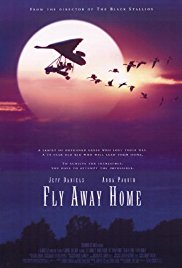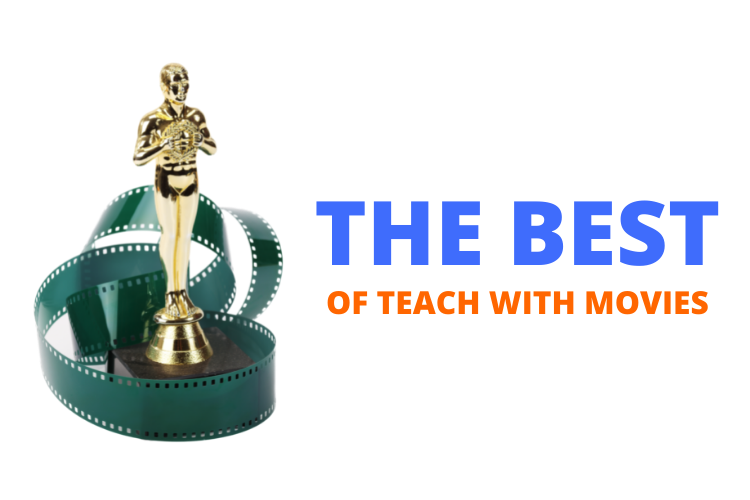This lesson can be used to: (1) introduce the concept of the Hero’s Journey; (2) confirm and extend students’ prior knowledge of the Hero’s Journey or (3) serve as a summative assessment.
TWM recommends that before seeing the film students are presented with the information contained in TWM’s Stages and Archetypes of the Hero’s Journey — Introducing the Monomyth. This information can be presented through a handout or through direct instruction.
Distribute the Worksheet on The Hero’s Journey. Tell students that while the film does not contain all aspects of the classic Hero’s Journey, most of the elements are clearly present and several of the archetypes appear in the story. Instruct students that they may make brief notes while watching the movie and that they will be given an opportunity to complete the worksheet after the film is over. Either before or after students have completed their worksheets, hold a class discussion on the stages of the Hero’s Journey and its archetypes shown in the movie.
NOTES ON RESPONSES TO WORKSHEET PROMPTS FOR “FLY AWAY HOME”
These notes will assist teachers in leading class discussions and evaluating student responses to written assignments. Most prompts in the worksheet have no single correct answer. An acceptable response will be an answer which is supported by facts and reveals that the student is thinking about the story.
I. Write a short one-paragraph description of the quest described in this story. Amy’s quest is her journey from overwhelming sorrow at her mother’s death in a car accident, to acceptance of loss and engagement with life once again. One of the ways that Amy works through her grief is by finding a cause outside of herself. In Amy’s case, the cause is another quest which she shares with her father, an effort to find a way to teach her geese a natural migration pattern. Both of Amy’s quests conform to the pattern of the Hero’s Journey.
II. For each stage of the Hero’s Journey describe the action of the film, if any, which manifests that stage. Be specific about the stage and the corresponding action.
SECTION ONE
1. The Ordinary World — In this story, Amy’s Ordinary World is the largely unseen life of a normal young girl living happily with her mother. The Hero’s Journey of Amy’s quest, in partnership with her father, to teach the geese to migrate has an Ordinary World of the geese orphaned and living on her father’s property.
2. The Call to Adventure — The automobile accident in which her mother is killed is Amy’s Call to Adventure. This is not an adventure that Amy wanted. Not all Heros have the luxury of choosing their quests. An alternative interpretation is that the call to adventure occurs when Amy learns that the wildlife ranger will clip the wings of the geese if they stay at his father’s property.
3. Refusal of the Call — When Amy first comes to her father’s house she wants to be left alone. She rejects his attention as well as that given to her by Susan, her father’s friend. Accepting the love of one’s family and friends is an important part of dealing with loss and by rejecting proffered love, Amy is Refusing the Call. As for the second journey in this story, Amy initially refuses her father’s suggestion that the geese be taught to migrate. This is refusing the call.
4. Meeting with the Mentor — Amy’s father, who had been a weak parent, begins to serve as a mentor as does his friend Susan. Adult mentors are strong characters in Amy’s journey because she has no friends her own age. The mentor on the journey of Amy and her father to find a way to teach the geese how to migrate would be the naturalist in the United States who gives Amy’s father important information about the behavior of geese.
5. Crossing the First Threshold — The first threshold for Amy’s journey through grief can be seen when Amy is sleeping in the barn with the hatched geese. Her father, Susan and Barry find her after a frantic search of the property. She asks her father if she can keep them and he agrees. This is the first time that she has let him into her world emotionally. As for the second journey in the story, crossing the first threshold can be seen in several of the first steps in that process: when the geese follow Amy; when they are first led into the air following Amy in an ultralight, etc.
SECTION TWO
6. Tests, Allies, and Enemies — Amy’s tests are whether to accept Susan as a friend, whether to accept the fact that the birds need freedom and cannot be shut up in the barn, when she must learn to pilot the aircraft, and when she must go forward on her own after her father crashes. Her allies are her father, Susan, her uncle, and her father’s friend Dave; each of these adults assist Amy in getting though her grief. Amy’s enemy is that part of her self which is shocked, hurting, and paralyzed by her loss. The grieving Amy is her shadow. As for the quest of Amy and her father to show the geese how to migrate, Amy’s allies are the same as for her personal journey. The tests are all of the obstacles that her father and Amy overcome in the process of teaching the birds to fly and finally taking them to the refuge in the U.S. where they will winter over. Her allies in this effort are the same as in her first Journey. Her enemy as to this Journey is the wildlife ranger, Glen.
7. Approach to the Inmost Cave — It can be argued that Amy Approaches the Inmost Cave when she and her father have a conversation about why he had divorced her mother and why he did not visit her after the family separated. Another possibility is that when Amy considers taking the ultralight and attempting to fly on her own after her father has crashed, she is Approaching the Inmost Cave. Her mother has died in an accident, her father has hurt himself in a crash, and now she must face flying on alone. Each of these ideas are valid. For the second quest, the crash is also the Approach to the Inmost Cave, but for a different reason: Amy must decide if the risks of the enterprise, crashing alone in the marsh or losing her way, are worth the eventual reward of teaching a migration route to her geese.
8. Ordeal — The crisis, the highest moment of tension, occurs when Amy summons the courage to continue on alone after her father’s ultralight has crashed. This is her Ordeal because she must make the decision to face life confidently with acceptance that her mother has died. Amy’s father tells her that her mother is with her, all around her, and acceptance of this propels her forward. In Amy’s story, the quest is internal, thus it’s crisis is an internal emotional battle. The Ordeal of the second quest is the final leg of the journey in which Amy flies on alone.
9. Reward. The reward Amy receives for her ordeal is that she matures, that she has the ability to accept the unconditional love from her father, and, most importantly, that she has become reconciled to her mother’s death and yet retains a positive attitude toward life. Another way to put it is that Amy is now relieved from the debilitating effects of her grief. The reward for the second journey is that Amy and her father have found a way to teach Amy’s geese to migrate.
SECTION THREE
10. The Road Back — The Road Back for Amy’s quest to accept the loss of her mother and pass through her grief is experienced as Amy flies on without her father toward the marsh where the geese will spend the winter. Roads back are perilous journeys in themselves and not all heros make it. If Amy had crashed and not been able to reach the wildlife refuge, she might not have been able to deal with this second loss and she might have regressed back into grief. But Amy makes it to the refuge, to the applause of those gathered expectantly awaiting her arrival. As for the journey of the geese, the Road Back would logically be the return migration. However, we are not shown that in this story.
11. Resurrection — Amy, having passed through grief and accepted her mother’s death while retaining a positive outlook on life and accomplishing something wonderful with her geese, is a resurrected human being. The second journey brings Amy and her father a resurrection as well based on their triumph over nature and adversity.
12. Return with the Elixir — It is clear from the general sense of joy at the film’s end that the elixir is the knowledge that by going to nature, accepting the love of family and friends, undertaking a project that has meaning and is beneficial, one can transcend a grievous loss. As to the second journey, the elixir is the knowledge that geese can be taught to migrate using imprinting and ultralight aircraft.
III. Identify the archetypes of the Hero’s Journey that appear in the movie and, for each, describe the function it performs in telling the film’s story.
The archetypes of the hero’s journey which appear in “Fly Away Home”are:
1. Hero — Amy is the heroine of the first journey. She and her father are the heros of the quest to teach the geese to migrate.
2. Mentor — Amy’s father and his girlfriend, Susan, serve as mentors on Amy’s first quest. The professor* serves as a mentor for the second.
3. Threshold Guardians — There are no threshold guardians for Amy’s quest to accept the loss of her mother and to move on. Glen the wildlife ranger is a threshold guardian on the second quest.
4. Herald: The archetype of the Herald does not appear in either quest.
5. Shapeshifter — The wildlife ranger is a Shapeshifter who does from someone supportive to the enemy
6. Shadow — The Shadow is Amy’s grieving self, that part of her personality that she must conquer to come to terms with the death of her mother. There is no shadow in the second quest.
7. Trickster: The archetype of the Trickster does not appear in the story.
IV. Describe any other other archetypes that appear in the story and the functions they perform.
The archetypes of the Mother, the Father and the Child have functions in this case. Through the course of the story, Amy’s father grows in his ability to fulfill the functions of the father archetype.





